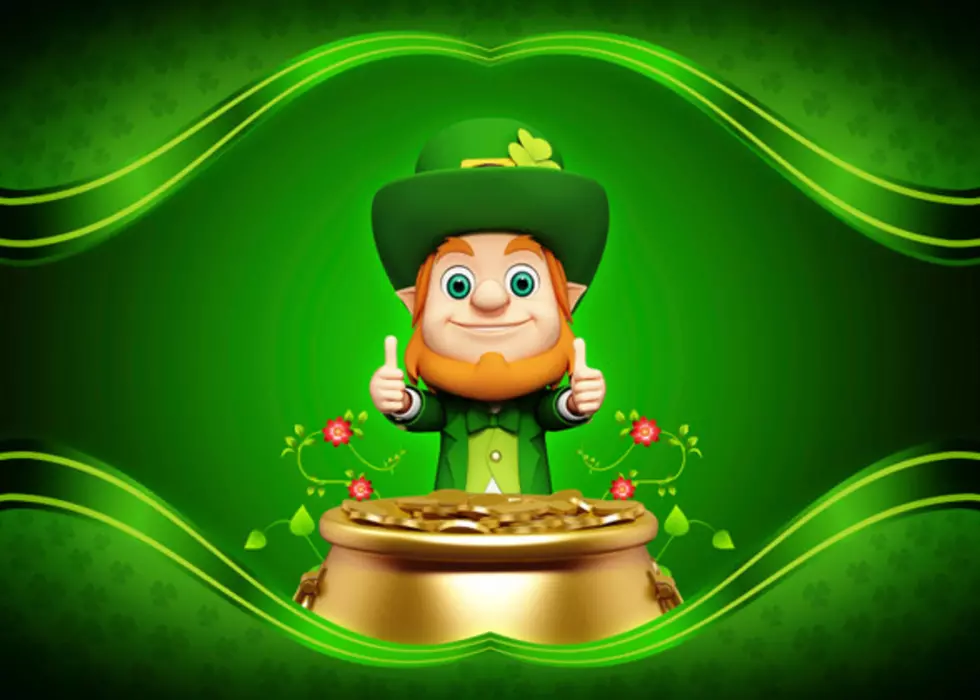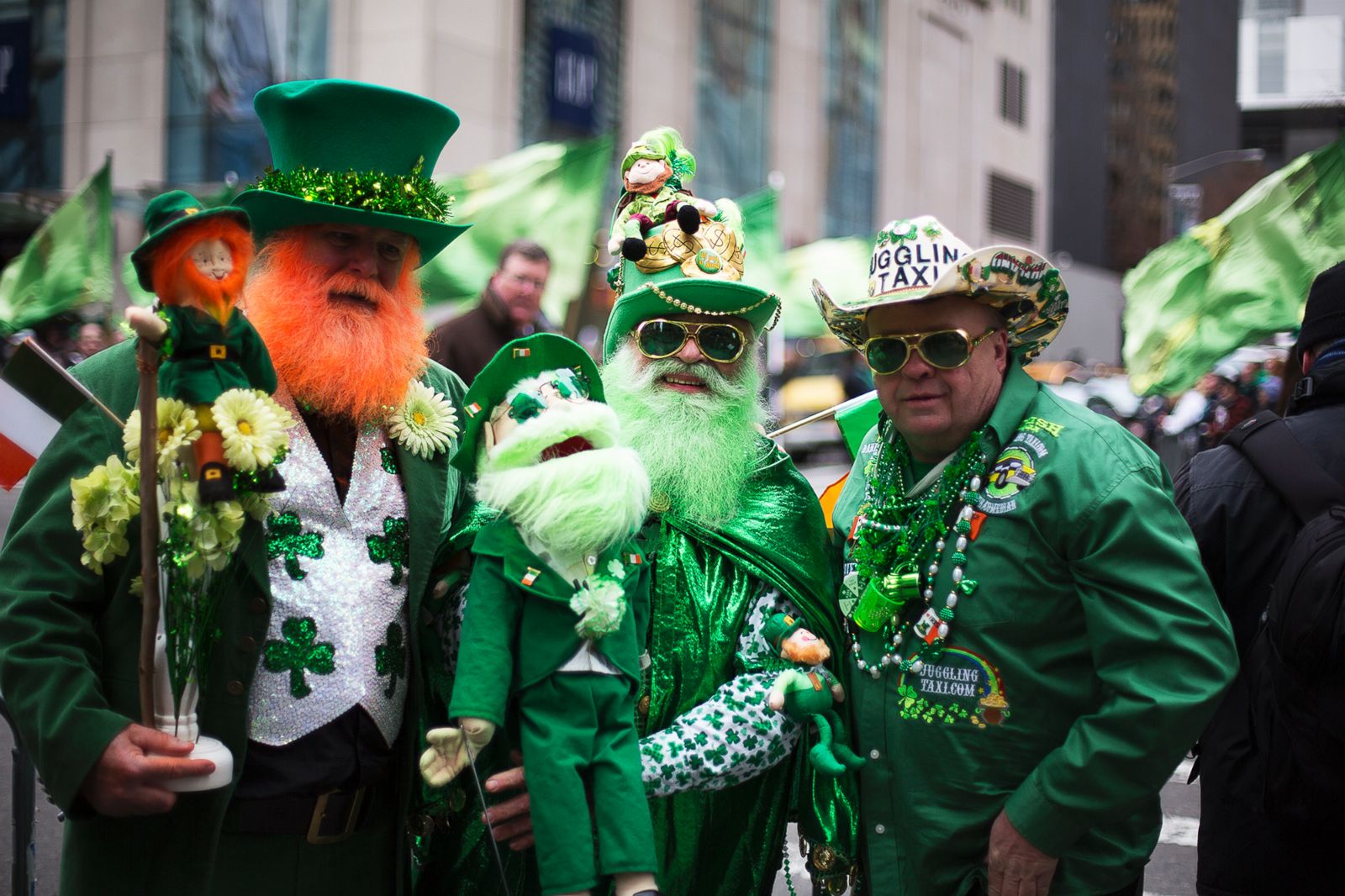Gallery
Photos from events, contest for the best costume, videos from master classes.
 |  |
 |  |
 | |
 |  |
 |  |
 |  |
St. Patrick’s Day usually conjures images of partying, Catholicism, Irish nationalism and, perhaps most famously, the color green: green clothes, green shamrocks, green beer and green rivers. The Origins of St. Patrick’s Day. First, to understand the specific tradition of wearing green, we must appreciate the roots of St. Patrick’s Day itself. Originally, St. Patrick’s Day was a religious observance in the 17th century for Catholics in Ireland, marking the death of St. Patrick, who is credited with bringing Christianity to Yes, many people, not just in Ireland but from across the world, choose to wear green to celebrate St Patrick’s Day. From shamrocks to the national flag of Ireland, green is a colour that’s become synonymous with the country. By the 1930s, the custom of wearing green on St. Patrick’s Day had become so widespread that even President Franklin D. Roosevelt, who was of Dutch ancestry, joined in.An article published on In the United States, green is a central element of the festivities. This is perhaps most famously seen in Chicago, where the Chicago River is dyed green for the occasion. On a more personal level, tradition holds that failing to wear green on St. Patrick’s Day may subject you to a playful pinch. However, green is now the more typical hue, thanks to Irish immigrants who came to America and celebrated St. Patrick's Day and their heritage by wearing this symbolic color. Today, many wear this color to honor their roots, for good luck (green is the color of the lucky shamrock, after all), and, of course, to stay safe from getting pinched. MORE: St. Patrick’s Day symbols and traditions to help you celebrate this fun holiday. The holiday, celebrated on the day of St. Patrick’s death, March 17th, celebrates all things Irish. Originally, the color blue was associated with the holiday, but in the 19th century, the color switched to green as the holiday gained popularity in the Not wearing green on St. Patrick’s Day comes with a warning – you may get pinched! Now, this is an old St. Patrick’s Day tradition and one that you don’t see practised that often. Don’t be surprised if you’ve never heard of it, as it seems to be a ‘tradition’ cooked up in America. St. Patrick’s Day isn’t just about wearing green—why not eat green too? Bring the party to your plate with these Mexican Green Foods for St. Patrick’s Day!Whether you’re craving something fresh, spicy, or hearty, these recipes from Muy Delish will add a fun and tasty twist to your celebration. As mentioned, representations of leprechauns — especially the playful leprechauns of American popular culture — are part of St. Patrick's Day more so than even in Ireland, and the pinching tradition for people not wearing green is also an entirely American creation. Pinching on St. Patrick's Day dates to at least the early 18th century. St. Patrick’s Day is fast approaching on Sunday, March 17. And with the holiday comes a dull panic as you rifle through your closet to try and find green clothes so you don’t get pinched. But (WHTM) — Wearing green is one of the most important aspects of Irish culture and celebrating St. Patrick’s Day, but not everyone knows why people wear green when celebrating the holiday worldwide. To ease the transition into spring and summer outfits, a green dress is a choice for St. Patrick's Day that can double as an everyday basic to wear once the weather gets warmer. Olivia Steele Headshot (WHTM) — Wearing green is one of the most important aspects of Irish culture and celebrating St. Patrick’s Day, but not everyone knows why people wear green when celebrating the holiday worldwide. According to TIME Magazine, green was not always the color associated with Ireland. In fact, blue was the color associated with the country [] Wearing green on St. Patrick's Day (supposedly!) makes you invisible to the leprechauns, so we’re sure you can gather what happens if you don’t wear green on March 17. St. Patrick didn’t wear green Historically, the color associated with St. Patrick and Ireland was blue, not green. Green was finally introduced to the festivities in the 18th century when the In addition to the vibrant tradition of wearing green clothing on St. Patrick’s Day, incorporating green jewelry into the day’s attire has become a cherished practice for many. Pieces like the Emerald Green Shamrock Brooch or the Irish Harp Brooch with emerald CZ, offered by The Irish Jewelry Company, not only enhance the festive spirit but St. Patrick’s Day is filled with rich traditions, from eating corned beef to attending parades. If you venture outside to celebrate the holiday—perhaps to swing by a pub for a pint of Guinness What Color Do Protestant Irish Wear on St. Patrick’s Day? Some wear orange—a nod to the House of Orange and the Protestant heritage of Northern Ireland. It’s controversial. It’s symbolic. It’s the other side of Ireland’s complicated, beautiful, broken harmony. But on Paddy’s Day, most people wear green regardless—because for one Wearing orange on St. Patrick’s Day, even if unintentional, could be interpreted as a sign of support for Protestant unionism, potentially causing offense or misinterpretations. It’s a subtle point, but awareness of this history is crucial for navigating St. Patrick’s Day celebrations respectfully.
Articles and news, personal stories, interviews with experts.
Photos from events, contest for the best costume, videos from master classes.
 |  |
 |  |
 | |
 |  |
 |  |
 |  |